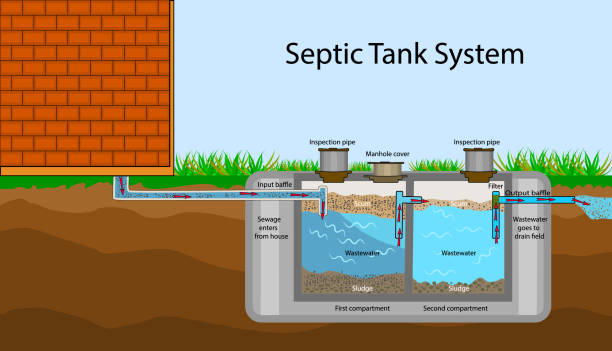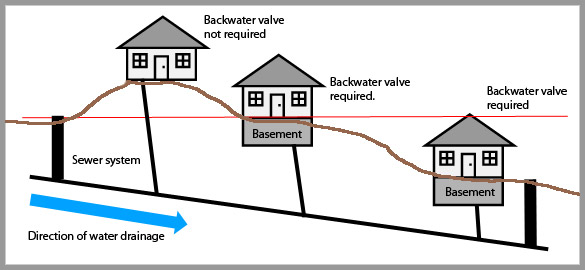The Basics to Your Home's Plumbing System Anatomy
The Basics to Your Home's Plumbing System Anatomy
Blog Article
This great article listed below in relation to Exploring Your Homes Plumbing Anatomy is exceedingly informative. Try it and make your own ideas.

Recognizing exactly how your home's pipes system works is necessary for every home owner. From delivering tidy water for drinking, cooking, and showering to securely eliminating wastewater, a well-maintained pipes system is critical for your household's wellness and comfort. In this detailed overview, we'll check out the intricate network that makes up your home's plumbing and offer tips on maintenance, upgrades, and dealing with usual concerns.
Intro
Your home's plumbing system is greater than simply a network of pipes; it's a complicated system that ensures you have access to clean water and reliable wastewater removal. Understanding its parts and just how they interact can help you avoid pricey fixings and guarantee whatever runs efficiently.
Basic Elements of a Plumbing System
Pipelines and Tubing
At the heart of your pipes system are the pipelines and tubing that bring water throughout your home. These can be made of numerous materials such as copper, PVC, or PEX, each with its benefits in terms of resilience and cost-effectiveness.
Components: Sinks, Toilets, Showers, etc.
Fixtures like sinks, toilets, showers, and tubs are where water is made use of in your home. Recognizing just how these fixtures link to the pipes system assists in detecting troubles and preparing upgrades.
Shutoffs and Shut-off Points
Valves manage the flow of water in your plumbing system. Shut-off valves are essential throughout emergencies or when you need to make repair work, permitting you to separate parts of the system without interfering with water circulation to the whole home.
Water System
Key Water Line
The primary water line links your home to the community water or an exclusive well. It's where water enters your home and is dispersed to different fixtures.
Water Meter and Stress Regulatory Authority
The water meter procedures your water usage, while a stress regulator ensures that water moves at a secure pressure throughout your home's plumbing system, protecting against damage to pipelines and fixtures.
Cold Water vs. Hot Water Lines
Recognizing the difference between cold water lines, which provide water straight from the primary, and hot water lines, which lug warmed water from the water heater, aids in repairing and planning for upgrades.
Drainage System
Drain Pipes Water Lines and Traps
Drain pipes lug wastewater far from sinks, showers, and toilets to the sewage system or sewage-disposal tank. Traps prevent sewage system gases from entering your home and likewise catch debris that could trigger clogs.
Ventilation Pipelines
Air flow pipes enable air into the water drainage system, avoiding suction that could reduce drain and create traps to vacant. Appropriate air flow is necessary for preserving the integrity of your pipes system.
Importance of Appropriate Drainage
Making sure proper water drainage avoids back-ups and water damage. Consistently cleaning up drains pipes and maintaining traps can avoid pricey repairs and prolong the life of your pipes system.
Water Heating Unit
Sorts Of Water Heaters
Water heaters can be tankless or traditional tank-style. Tankless heating units warmth water on demand, while storage tanks save heated water for instant usage.
Upgrading Your Plumbing System
Factors for Updating
Upgrading to water-efficient fixtures or changing old pipelines can boost water quality, lower water bills, and enhance the worth of your home.
Modern Pipes Technologies and Their Advantages
Discover innovations like smart leak detectors, water-saving bathrooms, and energy-efficient hot water heater that can conserve cash and decrease ecological impact.
Expense Factors To Consider and ROI
Compute the upfront expenses versus lasting financial savings when considering plumbing upgrades. Numerous upgrades spend for themselves via reduced utility costs and less repairs.
Exactly How Water Heaters Link to the Plumbing System
Comprehending just how water heaters connect to both the cold water supply and hot water distribution lines helps in identifying problems like inadequate hot water or leakages.
Upkeep Tips for Water Heaters
Regularly flushing your water heater to remove sediment, examining the temperature level settings, and examining for leaks can extend its lifespan and improve power performance.
Common Pipes Concerns
Leakages and Their Causes
Leaks can occur due to maturing pipes, loosened installations, or high water stress. Attending to leaks quickly avoids water damage and mold growth.
Obstructions and Clogs
Blockages in drains and toilets are frequently caused by flushing non-flushable things or a build-up of grease and hair. Utilizing drainpipe screens and being mindful of what decreases your drains pipes can avoid blockages.
Signs of Plumbing Troubles to Watch For
Low water stress, sluggish drains, foul odors, or abnormally high water expenses are indications of potential pipes issues that ought to be addressed without delay.
Pipes Maintenance Tips
Normal Assessments and Checks
Schedule annual pipes evaluations to capture problems early. Search for signs of leakages, corrosion, or mineral accumulation in faucets and showerheads.
DIY Upkeep Tasks
Easy jobs like cleaning faucet aerators, checking for commode leakages utilizing dye tablet computers, or protecting exposed pipelines in cool climates can prevent major pipes issues.
When to Call a Specialist Plumber
Know when a plumbing concern requires specialist know-how. Trying complex repair work without proper understanding can result in more damage and greater repair service costs.
Tips for Decreasing Water Usage
Simple behaviors like dealing with leaks without delay, taking shorter showers, and running complete lots of laundry and dishes can conserve water and lower your energy bills.
Eco-Friendly Pipes Options
Consider lasting pipes materials like bamboo for floor covering, which is durable and environmentally friendly, or recycled glass for counter tops.
Emergency situation Preparedness
Actions to Take Throughout a Plumbing Emergency situation
Know where your shut-off valves are located and how to switch off the supply of water in case of a ruptured pipe or significant leakage.
Significance of Having Emergency Situation Calls Useful
Maintain contact info for neighborhood plumbings or emergency services readily offered for quick action throughout a plumbing dilemma.
Ecological Effect and Conservation
Water-Saving Components and Devices
Setting up low-flow taps, showerheads, and bathrooms can considerably reduce water usage without giving up performance.
Do It Yourself Emergency Situation Fixes (When Relevant).
Temporary fixes like using air duct tape to patch a leaking pipeline or positioning a container under a leaking faucet can reduce damage until a specialist plumbing arrives.
Conclusion.
Understanding the makeup of your home's pipes system encourages you to keep it efficiently, conserving time and money on repairs. By following regular upkeep regimens and staying informed about modern plumbing technologies, you can guarantee your pipes system runs effectively for many years to find.
HOW YOUR PLUMBING SYSTEM WORKS
Which Pipes Do What?
Blue lines = fresh water supply entering the building Red lines = hot water supply entering the building Grey lines = pipes carrying waste away from the building and venting pipes carrying gases away from the building (through the roof) YOUR MAIN PLUMBING SYSTEMS
There are two main plumbing systems that support your home s basic plumbing needs one that brings clean water into your home, and one that sends dirty water away from your home. Connected to the toilet, bath, shower, and other faucets in your home, these two systems keep your water flowing in the right directions.
ACCESSING FRESH WATER
Fresh and clean water is brought into your home through the main water supply line . Filtered through one pipe, this water is pressured to flow into the various fixtures in your home at any given time.
This water can be sourced from a well located on your property, a pond or river (mostly cottages), or, as in most cases, from the city s municipal water treatment centre. However, it is important to note that water that is untreated, such as the water siphoned from ponds or rivers, may not be safe to drink. Personal water supplies always need to be treated for hardness and contaminants before consumed.
MUNICIPAL WATER SUPPLIES
Improve taste and odour Remove sediment Eliminate hardness Reduce chlorine COLD WATER SUPPLY VS. HOT WATER SUPPLY
Cold water flows into your home or building through the service line, which then distributes hot or cold water to your fixtures. This line is most commonly run through a central column that runs floor to floor. Hot water runs in short and straight pipes as the longer the pipeline, the more heat that will be lost in the transfer. Having shorter pipes also allows residents to access hot water more quickly.
WASTE WATER SYSTEM
Your wastewater system is divided into two parts pipes that send wastewater away from your home and venting pipes that send sewer gas away from your home. Sewage water travels through pipes that flush the water and waste towards local sewers that are operated and managed by your city or town. Most sewer systems rely on gravity to move the wastewater to where it needs to go.
The further away from your toilet or sink, the larger wastewater pipes become. This allows for waste to be disposed of from various parts of your home or business at once without pipe blockages. The angle and flow of these pipes are also essential for keeping your waste pipes clear of build up.
https://harrisplumbing.ca/how-your-home-plumbing-system-works/

Hopefully you enjoyed reading our section on Exploring Your Homes Plumbing Anatomy. Thanks a lot for taking the time to read our article post. Loved our posting? Please share it. Let someone else discover it. Thank you for your time. Kindly stop by our blog back soon.
Click Report this page